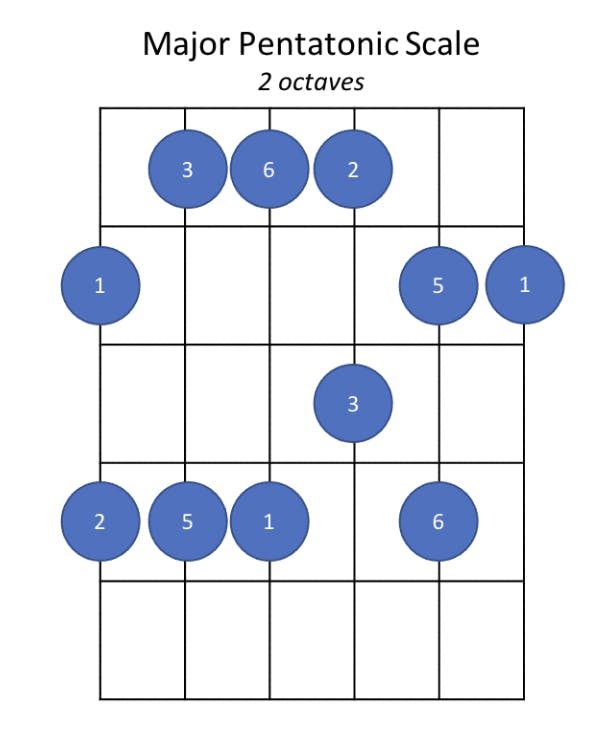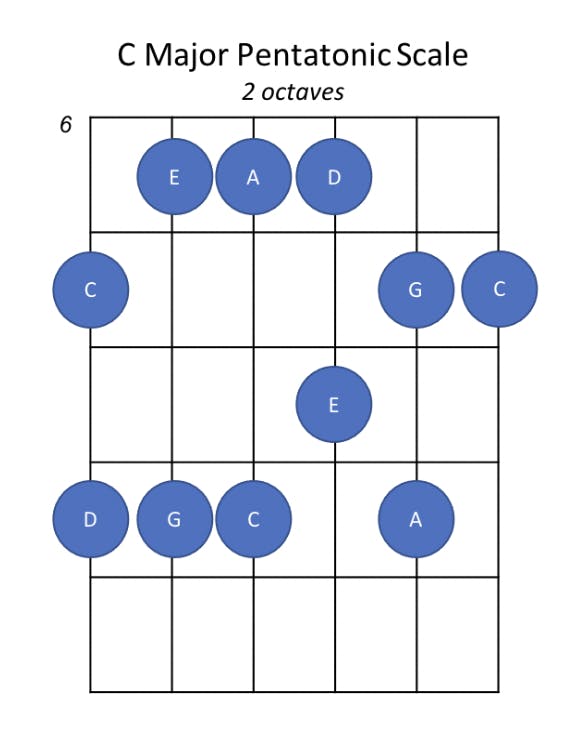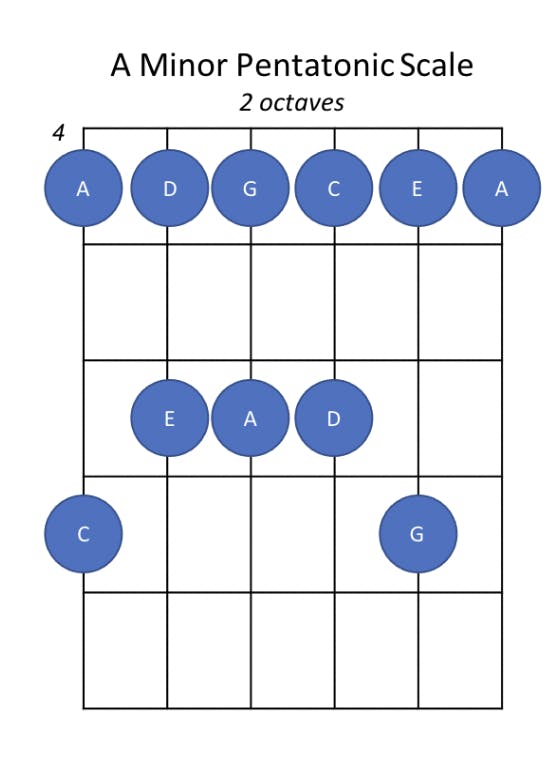Learning the Minor and Major Pentatonic Scale on Guitar
Want to learn how to write amazing guitar solos and melodies? Then you’re going to need to master your essential guitar scales. Two of the most important ones being the minor and major pentatonic scales.
What is the Pentatonic Scale?
‘Penta’ means five and ‘tonic’ means tone (or note). So, the pentatonic scale essentially means a five-note scale. Scales are groups of notes that sound good when played together and can be used to write great sounding riffs and solos on the spot.
Both the minor and the major pentatonic scales are based off the standard minor and major scales. We’ll go through some examples below.
Where many people get confused, is that the patterns for both the minor and the major pentatonic scale are the same, so they wonder why they need to learn both. However, the root note of any minor and major pentatonic scale will be different and therefore they will sound different. If you want to make the most out of your guitar skills, you need to learn both.
Why is Learning the Minor and Major Pentatonic Scales Important?
Anyone can learn to play songs on the guitar, but to write your own hits, you need to have a good understanding of guitar techniques and theories. Knowing your essential guitar scales are what can make the difference between an average guitar player and a great one.
Both scales are reasonably simple to learn and yet can have a big impact on your guitar playing. Get this right, and you’ll be on your way to writing your own killer riffs and improvising banging solos in no time.
After all, both the minor and major pentatonic scale feature in pretty much every genre there is. From pop to rock and contemporary to country. However, it is also essential for anyone wanting to learn how to play blues guitar. Both the minor and major blues scales are based off the two essential minor and major pentatonic scales, so you want to make sure you get the basics right before you progress to the more complicated blues scale.
At MusicGurus we help you get the fundamentals right and support you on your journey to becoming a pro guitar player. Browse our full collection of online guitar courses to find lessons taught by pro musicians. Learn from their expert knowledge and experience to become the guitar player you always wanted to be.
We even have a full catalogue of Rockschool Guitar courses in collaboration with MusicGurus. Traditional Rockschool Guitar lessons are brought to life in HD video and sound, so that we can support your guitar learning journey no matter what stage you are at.
How to Play the Pentatonic Scales on Guitar
As mentioned, the notes of any major pentatonic scale and its relative minor pentatonic scale on guitar will be exactly the same. Both scales contain exactly the same notes, but they start from different points.
A major scale and its relative minor scale are complimentary to each other but have distinctive tonalities. When playing either scale, you will generally want to place more emphasis on the root (or starting) note. If you’re playing a major scale this note will tend to sound more upbeat, and if you’re playing a minor scale, it will sound more solemn or ominous.
To give you an example, we will go through how to play the C major pentatonic scale and its relative A minor pentatonic scale.
How to Play the C Major Pentatonic Scale
We now know that the major pentatonic scale is based off the major scale.
The major scale looks like this:

As mentioned, a pentatonic scale is a five note scale. So, to turn this into a major pentatonic scale, we need to remove the 4th and the 7th scale degrees. So, a major pentatonic scale over two octaves looks like this on the guitar fretboard:

Now let’s look at an example of how to put this into practice. A C major pentatonic scale will look like this:
1 - C
2 - D
3 - E
5 - G
6 - A

How to Play the A Minor Pentatonic Scale
Now let’s look at the C major pentatonic scale’s relative A minor pentatonic scale.
A standard natural minor scale looks like this:

We know that a pentatonic scale only has five notes. So, to turn this into a minor pentatonic scale, we remove the 2nd and the 6th scale degrees. Note that this is one of the key differences in identifying minor and major pentatonic scales.
With that in mind, a minor pentatonic scale looks like this:

Now let’s put it into practice on the guitar fretboard with the A minor pentatonic scale over two octaves:
1 - A
3 - C
4 - D
5 - E
7 - G

So, as you can see, the notes of both the C major pentatonic scale and the A minor pentatonic scale are the same. However, the root note of the C major pentatonic scale is C, whereas the root note of the A minor pentatonic scale is A. Practice both pentatonic scales on your guitar, paying attention to the root note of both to hear the difference in overall tonality in both.
To learn more essential guitar scales and skills and other important music theory lessons, check out our full collection of exclusive online music lessons and level up your guitar skills today!
Latest posts
See all → Paddy Milner stars in upcoming music documentary ‘The Session Man’
Paddy Milner stars in upcoming music documentary ‘The Session Man’
MusicGurus artist and instructor Paddy Milner features in an upcoming film celebrating the incredible career of session pianist Nicky Hopkins.
 Who Was Nicky Hopkins? The Unsung Hero of Rock and Roll
Who Was Nicky Hopkins? The Unsung Hero of Rock and Roll
Learn about piano player Nicky Hopkins who collaborated with The Beatles, The Who, The Rolling Stones and more on MusicGurus.
 Around The World With Sir Tom Jones
Around The World With Sir Tom Jones
A look back at an incredible tour written by Sir Tom's pianist, and our very own blues piano maestro, Paddy Milner

